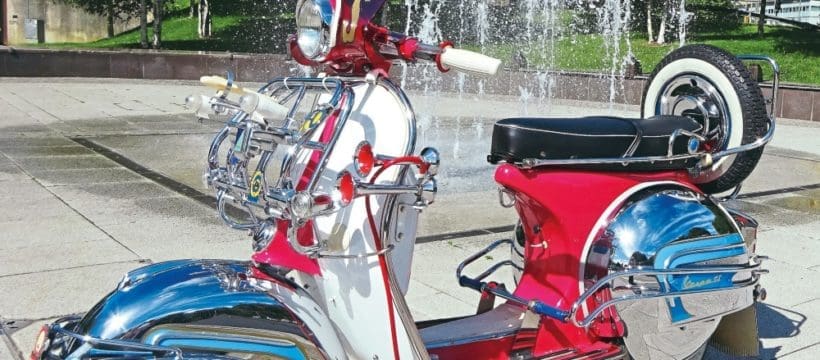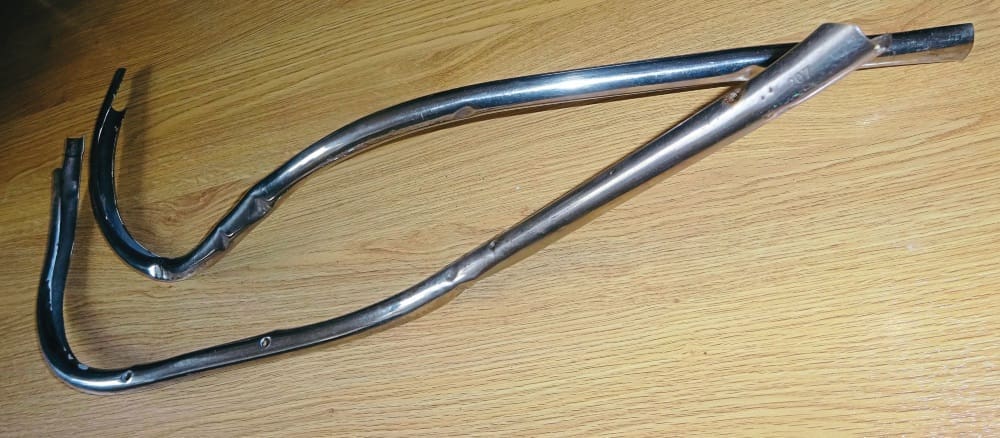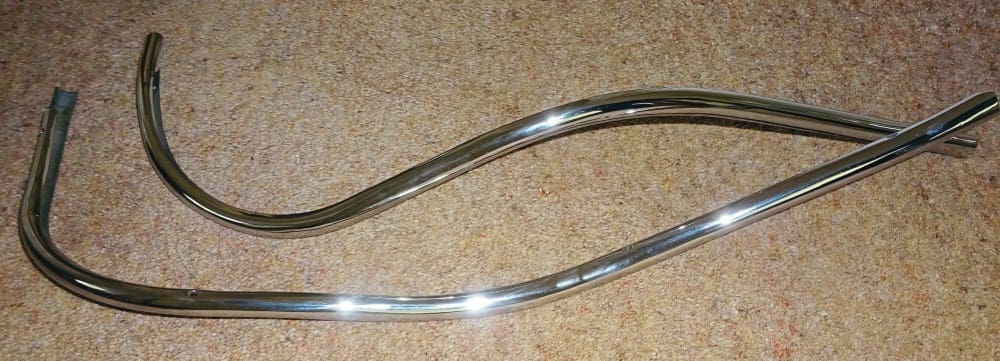One problem that occurs when restoring scooters – in particular, old Vespas – is the availability (or lack of) suitable replacement spare parts for particular models.

The subject of this article covers the stainless steel trims associated with the Vespa models tabulated below. These trims were fitted by the manufacturer to certain Vespa models and varied over the years in their type, material and construction.
THE PROBLEM
The 1963 GS160 is a classic Vespa model that utilised stainless steel trims and, as they were often dispensed with after being damaged, the GS in question was lucky to still retain the original complement of trims. These trims had however, seen better days and were extensively damaged with localised areas of denting, deformity and scraping.
Sadly, new old stock replacement items of trim are, to a great extent, a thing of the past and it’s not helped by the fact successive Vespa models had differing legshield profiles which required dedicated surrounds to match. In fact, so hard to find are these trims that one side of a set of trims (they’re supplied in two halves) recently sold on an online auction site for £150.
Replacements are available in chrome-plated steel, but these are visibly different to the originals, tend to scratch the paintwork on fitting and (obviously) are prone to rusting, so tend to be a fitment of last resort.
CAN TRIMS BE REPAIRED?
Any repair of an item so unusual needs to be undertaken by a trusted artisan with knowledge of the part and its final intended use.
This makes the field of choice narrow; but there is at least one possibility and that’s to try your local chrome plater. Chromers are often faced with varying assortments of often twisted metal that eager owners wish to be magically transformed into exact replicas of the original, undamaged part. Easy enough to do in theory, but far from simple in practice.

Trims strapped to the chassis back 
Trims strapped to the chassis front
Over the years chrome platers have developed a number of cunning tools and ploys to repair varying types of metal to replicate their original form; this has become a much-focused art form of the highest order. The tools used are basic and consist of various types of often purpose-made panel beating hammers and polished anvil plates to support the ‘tin bashing’, but needs must to obtain a perfect end product. However, the main component required to produce a perfect finished article is: SKILL! We’re now talking about a very specialised skill that’s something of a dying art in our throwaway society.
We were warned that the beating-out of these trims might result in their profile altering, so it was suggested they had to be re-fitted to the chassis and pulled into shape with straps before returning the parts to be finally polished.

Damaged stainless trims before repair 
Stainless trims after repair
One company that has successfully repaired stainless trims in the past is South East Chroming (ex-London Chroming), so our Vespa GS trims were placed in their expert hands to fix and fettle. It was with some trepidation these parts were offered to these craftsmen as these trims were obviously badly damaged and there was the thought they may be beyond repair. We were, as it transpired in this case, lucky and the trims were accepted for refurbishment.
THE COST
At this stage, such ministrations of craft and expertise come with two not-so-positive side issues for the customer; firstly, the work will take a fair bit of time; and because of this and the skillsets applied, will by no means be cheap.
Having made that statement and being fully aware of these facts, sitting down in a comfortable chair when the final phone call on the subject of the quotation of costs occurs is possibly a very good idea. Such is the rich tapestry of life, one might say? Or one just might say: “Ouch!”
To cut a long story short, the old GS is now the proud owner of a set of perfect stainless steel legshield surrounds. WOW!
“How much?” we hear you ask… £180! Quality costs, as mentioned above.






